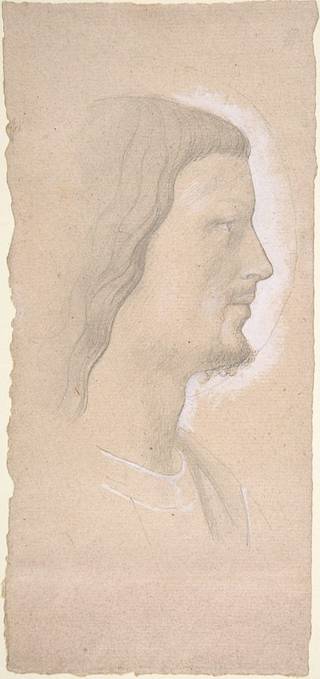
Similar
Kopf eines Heiligen (Profil rechts), nach Fra Angelico
Zusammenfassung
Edgar Degas (French, Paris 1834–1917 Paris)
Public domain photograph of 15th-century, early renaissance art, free to use, no copyright restrictions image - Picryl description
Vor allem mit dem Thema Tanz identifiziert er sich, mehr als die Hälfte seiner Arbeiten stellt Tänzer dar. Er gilt als einer der Begründer des Impressionismus, obwohl er den Begriff ablehnte und es vorzog, als Realist bezeichnet zu werden. Er war ein hervorragender Zeichner und besonders meisterhaft in der Darstellung von Bewegungen, wie man an seiner Darstellung von Tänzern, Rennbahnthemen und weiblichen Aktdarstellungen sehen kann. Seine Porträts zeichnen sich durch ihre psychologische Komplexität und ihre Darstellung menschlicher Isolation aus. Zu Beginn seiner Karriere wollte Degas Historienmaler werden, eine Berufung, auf die er durch seine rigorose akademische Ausbildung und sein eingehendes Studium der klassischen Kunst gut vorbereitet war. Mit Anfang dreißig änderte er seinen Kurs, und indem er die traditionellen Methoden eines Historienmalers auf zeitgenössische Themen anwendete, wurde er zu einem klassischen Maler des modernen Lebens.
Early Renaissance or Quattrocento (Italian mille quattrocento, or 1400) refers to the 15th century in Florentine art. Extraordinary wealth was accumulated in Florence among a growing middle and upper class of merchants and bankers. Florence saw itself as a city-state where the freedom of the individual was guaranteed, and where a significant share of residents had the right to participate in the government. In 1400 Florence was engaged in a struggle with the Duke of Milan. Then, between 1408 and 1414 again, by the King of Naples. Both died before they could conquer Florence. In 1425 Florence won the war against Milan. The Florentine interpreted these victories as signs of God's favor and imagined themselves as the "New Rome". In this new optimistic and wealthy environment, Florentine artists immersed themselves in studies of the humanities, architecture, philosophy, theology, mathematics, science, and design. They spurred a rejuvenation of the glories of classical art in line with the humanistic and individualistic tendencies of the contemporary era. Quattrocento was followed by the High Renaissance, North European Renaissance, Mannerism, and Baroque periods. Unlike the previous proto-renaissances, the innovations that emerged in Florence would go on to cause reverberations in Italy and Northern Europe, which continue to influence culture until today.
Tags
Datum
Quelle
Copyright-info





























